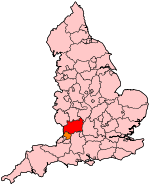Tewkesbury (UK Parliament constituency)
| Tewkesbury | |
|---|---|
|
County constituency for the House of Commons | |
|
Boundary of Tewkesbury in Gloucestershire. | |
|
Location of Gloucestershire within England. | |
| County | Gloucestershire |
| Electorate | 77,206 (December 2010)[1] |
| Current constituency | |
| Created | 1997 |
| Member of parliament | Laurence Robertson (Conservative) |
| Number of members | One |
| Created from | Cirencester & Tewkesbury, Cheltenham and West Gloucestershire |
| 1610–1918 | |
| Number of members |
1610–1868: Two 1868–1918: One |
| Type of constituency | Borough constituency |
| Overlaps | |
| European Parliament constituency | South West England |
Tewkesbury is a constituency[n 1] represented in the House of Commons of the UK Parliament since its 1997 recreation by Laurence Robertson, a Conservative.[n 2]
History
1610 to 1918
Tewkesbury existed in this period, first in the parliamentary borough form. It returned two MPs until this was reduced to one in 1868, then saw itself become instead a larger county division under the Redistribution of Seats Act 1885, and it was abolished in 1918.
- Prominent politicians
- William Dowdeswell was Chancellor of the Exchequer for two years under Rockingham, and his short tenure of this position appears to have been a successful one, he being in Lecky's words a good financier, but nothing more. To general astonishment, he refused to abandon his friends and to take an office under The 1st Earl of Chatham ("Pitt the Elder"), who succeeded Rockingham in August 1766. Dowdeswell then led the Rockingham party in the House of Commons, taking an active part in debate until his death. In 1774 he warned MPs against passing the Boston Port Act, related to the later Boston Tea Party.
- Charles Hanbury-Tracy was heir to much of the Pontypool part the growing iron industry and served as the chairman of the commission of 1835 that commissioned the new Houses of Parliament and judged designs.
- After service for Tewkesbury Frederick Lygon, 6th Earl Beauchamp entered the Lords and then served in Cabinet positions under the earlier governments headed by Lord Salisbury, before the turn-of-the century third government.
1997 to date
The fourth periodic review of Westminster constituencies in 1997 saw the seat's recreation, from the similar, but slightly larger county division Tewkesbury and Cirencester, compared to the present seat.
Boundaries
1885-1918: The Municipal Boroughs of Gloucester and Tewkesbury, the Sessional Divisions of Berkeley, Cheltenham, Gloucester, Tewkesbury, and Winchcombe, part of the Sessional Division of Whitminster, and the civil parish of Slimbridge.
1997-2010: The Borough of Tewkesbury wards of Ashchurch, Bishop's Cleeve East, Bishop's Cleeve North, Bishop's Cleeve South, Brockworth Glebe, Brockworth Moorfield, Brockworth Westfield, Churchdown Brookfield, Churchdown Parton, Churchdown Pirton, Cleeve Hill, Coombe Hill, Crickley, De Winton, Dumbleton, Gotherington, Horsbere, Innsworth, Shurdington, Tewkesbury Mitton, Tewkesbury Newtown, Tewkesbury Prior's Park, Tewkesbury Town, Twyning, and Winchcombe, and the Borough of Cheltenham wards of Leckhampton with Up Hatherley, Prestbury, and Swindon.
2010–present: The Borough of Tewkesbury wards of Ashchurch with Walton Cardiff, Badgeworth, Brockworth, Churchdown Brookfield, Churchdown St John’s, Cleeve Grange, Cleeve Hill, Cleeve St Michael’s, Cleeve West, Coombe Hill, Hucclecote, Innsworth with Down Hatherley, Isbourne, Northway, Oxenton Hill, Shurdington, Tewkesbury Newtown, Tewkesbury Prior's Park, Tewkesbury Town with Mitton, Twyning, and Winchcombe, the Borough of Cheltenham wards of Prestbury and Swindon Village, and the City of Gloucester ward of Longlevens.
The constituency was created in 1997 from parts of the seats of Cirencester and Tewkesbury, Cheltenham and West Gloucestershire.
As its name suggests, the main town in the constituency is Tewkesbury, but other settlements include Twyning, Ashchurch, Bishop's Cleeve, Winchcombe, Prestbury, Brockworth, Churchdown, Innsworth and Longlevens.[2]
Constituency profile
The town has a raised centre with the second largest parish church in the country that is the church of a former Benedictine monastery, named Tewkesbury Abbey, the town also has its own mustard and July medieval battle festival. Workless claimants, registered jobseekers, were in November 2012 significantly lower than the national average of 3.8%, at 2.2% of the population based on a statistical compilation by The Guardian.[3]
Members of Parliament
MPs 1610–1629
- Constituency created (1610)
The constituency was enfranchised on 23 March 1610 - the first record of its members sworn is 16 April 1610.[4]
| Parliament | First member | Second member |
|---|---|---|
| Parliament of 1604-1611 (1610) | Sir Dudley Digges | Edward Ferrers |
| Addled Parliament (1614) | Sir John Ratcliffe | |
| Parliament of 1621-1622 | Giles Brydges | |
| Happy Parliament (1624-1625) | Sir Baptist Hicks | |
| Useless Parliament (1625) | ||
| Parliament of 1625-1626 | ||
| Parliament of 1628-1629 | Sir Thomas Colepeper | |
| May 1628 | Sir William Hicks | |
MPs 1640–1868
| Year | First member[5] | First party | Second member[5] | Second party | ||
|---|---|---|---|---|---|---|
| April 1640 | Sir Anthony Ashley Cooper | Sir Edward Alford | ||||
| November 1640 | Double return — election declared void[6] | |||||
| August 1641 | Sir Robert Cooke | Parliamentarian | Sir Edward Alford[7] | Royalist | ||
| 1641 | Edward Stephens | Parliamentarian | ||||
| August 1643 | Cooke died — seat left vacant | |||||
| 1645 | John Stephens | |||||
| December 1648 | Edward Stephens excluded in Pride's Purge - seat vacant | |||||
| 1653 | Tewkesbury was unrepresented in the Barebones Parliament | |||||
| 1654 | Sir Anthony Ashley Cooper - chosen for Wiltshire - replaced by Francis St John | Tewkesbury had only one seat in the First and Second Parliaments of the Protectorate | ||||
| 1656 | Francis White | |||||
| January 1659 | Edward Cooke | Robert Long[n 3] | ||||
| May 1659 | Not represented in the restored Rump | |||||
| April 1660 | (Sir) Henry Capell | Richard Dowdeswell | ||||
| 1673 | Sir Francis Russell | |||||
| 1685 | Richard Dowdeswell | |||||
| 1690 | Sir Henry Capell | |||||
| 1692 | Sir Francis Winnington | |||||
| 1698 | Charles Hancock | |||||
| 1701 | Edmund Bray | |||||
| 1708 | Henry Ireton | |||||
| 1710 | William Bromley | |||||
| 1712 | William Dowdeswell | |||||
| 1713 | Charles Dowdeswell | |||||
| 1714 | Anthony Lechmere | |||||
| 1717 | Nicholas Lechmere | |||||
| 1721 | The Viscount Gage[n 4] | |||||
| 1722 | Brigadier George Reade | |||||
| 1734 | Robert Tracy | |||||
| 1741 | John Martin | |||||
| 1747 | William Dowdeswell | Whig | ||||
| 1754 | Nicolson Calvert | Whig | John Martin, junior | |||
| 1761 | Sir William Codrington | Tory | ||||
| 1774 | Joseph Martin | Whig | ||||
| 1776 | James Martin | Whig | ||||
| 1792 | Lieutenant-Colonel William Dowdeswell | Tory | ||||
| 1797 | Christopher Bethell Codrington | Tory | ||||
| 1807 | Charles Hanbury Tracy | Whig | ||||
| 1812 | John Edmund Dowdeswell | Tory | John Martin | Whig | ||
| January 1832 | Charles Hanbury Tracy | Whig | ||||
| December 1832 | John Martin | Whig | ||||
| 1835 | William Dowdeswell | Conservative | ||||
| 1837 | John Martin | Whig | ||||
| 1847 | Humphrey Brown | Whig | ||||
| 1857 | Hon. Frederick Lygon | Conservative | ||||
| 1859 | James Martin | Liberal | ||||
| 1864 | John Yorke | Conservative | ||||
| 1865 | William Edward Dowdeswell | Conservative | ||||
| 1866 | Sir Edmund Lechmere, Bt | Conservative | ||||
| 1868 | Representation reduced to one Member | |||||
MPs 1868–1918
| Election | Member[5] | Party | |
|---|---|---|---|
| 1868 | William Edwin Price | Liberal | |
| 1880 | Richard Martin | Liberal | |
| 1885 | John Yorke | Conservative | |
| 1886 | Sir John Dorington | Conservative | |
| 1906 | Hon. Michael Hicks Beach | Conservative | |
| 1916 | William Frederick Hicks-Beach | Unionist | |
| 1918 | Constituency abolished | ||
MPs since 1997
| Election | Member[5] | Party | |
|---|---|---|---|
| 1997 | Laurence Robertson | Conservative | |
Elections 1997-2015
Elections in the 2010s
| Party | Candidate | Votes | % | ± | |
|---|---|---|---|---|---|
| Conservative | Laurence Robertson | 30,176 | 54.5 | +7.3 | |
| Labour | Ed Buxton | 8,204 | 14.6 | +3.2 | |
| Liberal Democrat | Alistair Cameron | 7,629 | 13.8 | -21.7 | |
| UKIP | Stuart Adair[10] | 7,128 | 12.9 | +8.7 | |
| Green | Jemma Clarke[11] | 2,207 | 4.0 | +3.0 | |
| Majority | 21,972 | 39.7 | +28.0 | ||
| Turnout | 55,344 | 70.1 | -0.3 | ||
| Conservative hold | Swing | [12] | |||
| Party | Candidate | Votes | % | ± | |
|---|---|---|---|---|---|
| Conservative | Laurence Robertson | 25,472 | 47.2 | -1.9 | |
| Liberal Democrat | Alistair Cameron | 19,162 | 35.5 | +7.1 | |
| Labour | Stuart Emmerson | 6,253 | 11.6 | -8.7 | |
| UKIP | Brian Jones | 2,230 | 4.1 | N/A | |
| Green | Matthew Sidford | 525 | 1.0 | -2.2 | |
| Monster Raving Loony | George Ridgeon | 319 | 0.6 | N/A | |
| Majority | 6,310 | 11.7 | |||
| Turnout | 53,961 | 70.4 | +8.2 | ||
| Conservative hold | Swing | -4.5 | |||
Elections in the 2000s
| Party | Candidate | Votes | % | ± | |
|---|---|---|---|---|---|
| Conservative | Laurence Robertson | 22,339 | 49.1 | +3.0 | |
| Liberal Democrat | Alistair Cameron | 12,447 | 27.4 | +1.2 | |
| Labour | Charles Mannan | 9,179 | 20.2 | −6.7 | |
| Green | Robert Rendell | 1,488 | 3.3 | N/A | |
| Majority | 9,892 | 21.8 | |||
| Turnout | 45,453 | 63.0 | −0.7 | ||
| Conservative hold | Swing | +0.9 | |||
| Party | Candidate | Votes | % | ± | |
|---|---|---|---|---|---|
| Conservative | Laurence Robertson | 20,830 | 46.1 | +0.3 | |
| Labour | Keir Dhillon | 12,167 | 26.9 | +0.7 | |
| Liberal Democrat | Steve Martin | 11,863 | 26.2 | -1.8 | |
| Independent | Charles Vernall | 335 | 0.7 | N/A | |
| Majority | 8,663 | 19.2 | |||
| Turnout | 45,195 | 63.7 | -12.5 | ||
| Conservative hold | Swing | ||||
Election in the 1990s
| Party | Candidate | Votes | % | ± | |
|---|---|---|---|---|---|
| Conservative | Laurence Robertson | 23,859 | 45.8 | ||
| Liberal Democrat | John Sewell | 14,625 | 28.1 | ||
| Labour | Kelvin Tustin | 13,665 | 26.2 | ||
| Majority | 9,234 | 17.7 | |||
| Turnout | 76.2 | ||||
| Conservative hold | Swing | ||||
Election results 1885-1918
Elections in the 1880s
| Party | Candidate | Votes | % | ± | |
|---|---|---|---|---|---|
| Conservative | John Reginald Yorke | 4,666 | 51.0 | ||
| Liberal | Godfrey Blundell Samuelson | 4,484 | 49.0 | ||
| Majority | 182 | 2.0 | |||
| Turnout | 78.4 | ||||
| Conservative hold | Swing | ||||
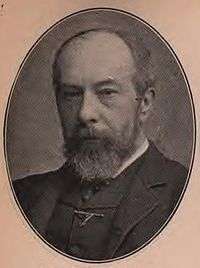
| Party | Candidate | Votes | % | ± | |
|---|---|---|---|---|---|
| Conservative | Sir John Edward Dorington | unopposed | n/a | n/a | |
| Conservative hold | Swing | n/a | |||
Elections in the 1890s
| Party | Candidate | Votes | % | ± | |
|---|---|---|---|---|---|
| Conservative | Sir John Edward Dorington | 5,028 | 54.9 | n/a | |
| Liberal | Godfrey Blundell Samuelson | 4,125 | 45.1 | n/a | |
| Majority | 903 | 9.8 | n/a | ||
| Turnout | 79.5 | n/a | |||
| Conservative hold | Swing | n/a | |||
| Party | Candidate | Votes | % | ± | |
|---|---|---|---|---|---|
| Conservative | Sir John Edward Dorington | unopposed | n/a | n/a | |
| Conservative hold | Swing | n/a | |||
Elections in the 1900s
| Party | Candidate | Votes | % | ± | |
|---|---|---|---|---|---|
| Conservative | Sir John Edward Dorington | unopposed | n/a | n/a | |
| Conservative hold | Swing | n/a | |||
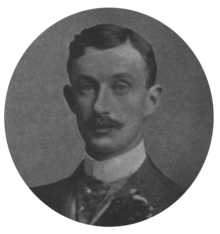
| Party | Candidate | Votes | % | ± | |
|---|---|---|---|---|---|
| Conservative | Michael Hugh Hicks Beach | 5,321 | 50.6 | n/a | |
| Liberal | Robert Ashton Lister | 5,194 | 49.4 | n/a | |
| Majority | 127 | 1.2 | n/a | ||
| Turnout | 79.5 | n/a | |||
| Conservative hold | Swing | n/a | |||
Elections in the 1910s
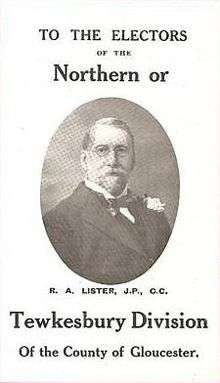
| Party | Candidate | Votes | % | ± | |
|---|---|---|---|---|---|
| Conservative | Michael Hugh Hicks Beach | 6,050 | 53.2 | ||
| Liberal | Robert Ashton Lister | 5,088 | 44.7 | ||
| Labour | Charles Herbert Fox | 238 | 2.1 | n/a | |
| Majority | 962 | 8.5 | +7.3 | ||
| Turnout | 86.5 | ||||
| Conservative hold | Swing | ||||
| Party | Candidate | Votes | % | ± | |
|---|---|---|---|---|---|
| Conservative | Michael Hugh Hicks Beach | 5,699 | 52.0 | -1.2 | |
| Liberal | Robert Ashton Lister | 5,267 | 48.0 | +3.3 | |
| Majority | 432 | 4.0 | -4.5 | ||
| Turnout | 10,966 | 83.4 | -3.1 | ||
| Conservative hold | Swing | -2.3 | |||
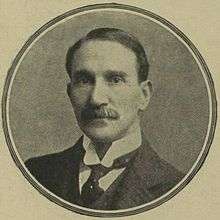
General Election 1914/15:
Another General Election was required to take place before the end of 1915. The political parties had been making preparations for an election to take place and by the July 1914, the following candidates had been selected;
- Unionist: Michael Hugh Hicks Beach
- Liberal: Sir Richard Mathias[24]
| Party | Candidate | Votes | % | ± | |
|---|---|---|---|---|---|
| Unionist | William Frederick Hicks-Beach | 7,127 | 83.2 | +31.2 | |
| Labour | William J Boosey | 1,438 | 16.8 | n/a | |
| Majority | 5,689 | 66.4 | +62.4 | ||
| Turnout | 62.0 | ||||
| Unionist hold | Swing | n/a | |||
See also
Notes and references
- Notes
- ↑ A county constituency (for the purposes of election expenses and type of returning officer)
- ↑ As with all constituencies, the constituency elects one Member of Parliament (MP) by the first past the post system of election at least every five years.
- ↑ Cannot have been Sir Robert Long Bt as stated by Williams as he was a Royalist
- ↑ of Castle Island, Ireland
- References
- ↑ "Electorate Figures - Boundary Commission for England". 2011 Electorate Figures. Boundary Commission for England. 4 March 2011. Retrieved 13 March 2011.
- ↑ 2010 post-revision map non-metropolitan areas and unitary authorities of England
- ↑ Unemployment claimants by constituency The Guardian
- ↑ W R Williams Parliamentary History of the County of Gloucester
- 1 2 3 4 Leigh Rayment's Historical List of MPs – Constituencies beginning with "T" (part 1)
- ↑ At the election of November 1640 a double return was made: Sir Robert Cooke, Sir Edward Alford, John Craven and Edward Stephens were all returned. The election was declared void on 6 August 1641.
- ↑ Alford's election was declared void and his opponent, Stephens, was declared duly elected. However, Alford had also been elected for Arundel, and continued to sit for that borough
- ↑ "Election Data 2015". Electoral Calculus. Archived from the original on 17 October 2015. Retrieved 17 October 2015.
- ↑ http://www.tewkesbury.gov.uk/CHttpHandler.ashx?id=3537&p=0 19Jun2015
- 1 2 http://ukpollingreport.co.uk/2015guide/tewkesbury/
- ↑ "Full Green Slate for Gloucestershire". South West Green Party. 23 October 2014. Retrieved 12 January 2015.
- ↑ swing not useful as change of party order from previous election
- ↑ "Election Data 2010". Electoral Calculus. Archived from the original on 17 October 2015. Retrieved 17 October 2015.
- ↑ "Election Data 2005". Electoral Calculus. Archived from the original on 15 October 2011. Retrieved 18 October 2015.
- ↑ "Election Data 2001". Electoral Calculus. Archived from the original on 15 October 2011. Retrieved 18 October 2015.
- ↑ "Election Data 1997". Electoral Calculus. Archived from the original on 15 October 2011. Retrieved 18 October 2015.
- 1 2 3 4 5 6 7 8 9 British Parliamentary Election Results 1885-1918, FWS Craig
- 1 2 3 4 5 6 The Liberal Year Book, 1907
- ↑ Debrett's House of Commons & Judicial Bench, 1886
- ↑ Debrett's House of Commons & Judicial Bench, 1901
- ↑ Debrett's House of Commons & Judicial Bench, 1901
- ↑ Debrett's House of Commons & Judicial Bench, 1916
- ↑ Debrett's House of Commons & Judicial Bench, 1916
- ↑ Gloucester Journal 16 May 1914
- ↑ Debrett's House of Commons & Judicial Bench, 1916
Sources
- Robert Beatson, A Chronological Register of Both Houses of Parliament (London: Longman, Hurst, Res & Orme, 1807)
- D Brunton & D H Pennington, Members of the Long Parliament (London: George Allen & Unwin, 1954)
- Cobbett's Parliamentary history of England, from the Norman Conquest in 1066 to the year 1803 (London: Thomas Hansard, 1808)
- The Constitutional Year Book for 1913 (London: National Union of Conservative and Unionist Associations, 1913)
- F W S Craig, British Parliamentary Election Results 1832-1885 (2nd edition, Aldershot: Parliamentary Research Services, 1989)
- J Holladay Philbin, Parliamentary Representation 1832 - England and Wales (New Haven: Yale University Press, 1965)
- Henry Stooks Smith, The Parliaments of England from 1715 to 1847 (2nd edition, edited by FWS Craig — Chichester: Parliamentary Reference Publications, 1973)
- Leigh Rayment's Historical List of MPs – Constituencies beginning with "T" (part 1)

